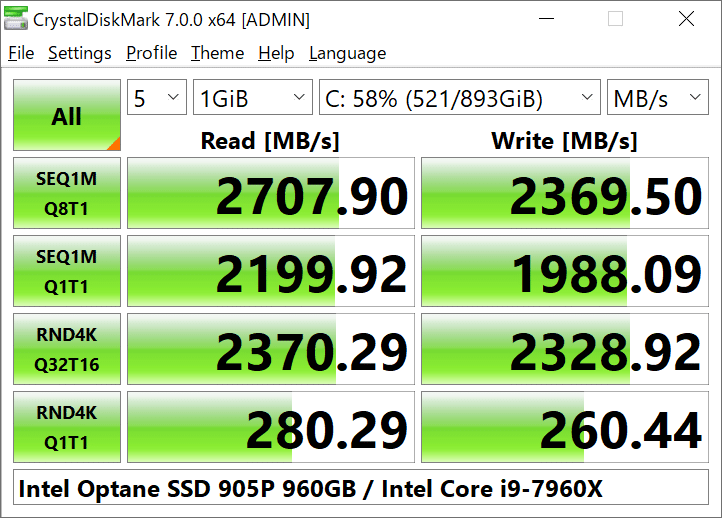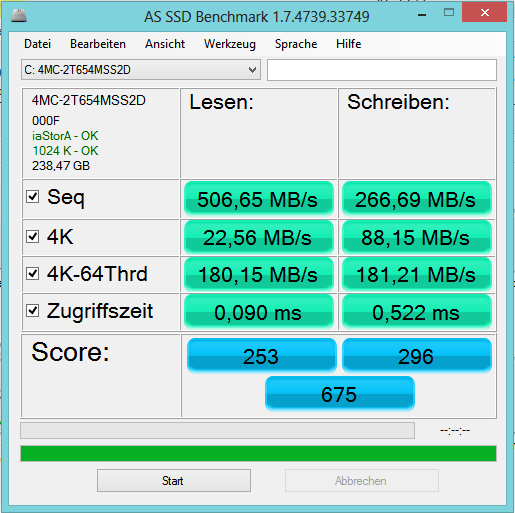

Our 4 ways to check if your Windows 10 laptop has SSD guide might also interest you. Step 5: The Drive health section displays the estimated remaining life of the hard drive or SSD, available spare, and current SSD temperature in degrees Celsius.īy the way, we advise you to always back up your data to a cloud storage service or external drive to avoid data loss. NOTE: If you have multiple SSDs on your computer, please scroll down the page to see all entries. Click on the hard drive or SSD entry to reveal the hidden Properties button. Step 3: The resulting page will display the number of drives and partitions on your PC. Step 2: In the More storage settings section, click on the Manage Disks and Volumes link. Check NVMe SSD estimated remaining life & temperature in Windows 10 IMPORTANT: The feature currently supports NVMe SSDs only. To check the build number, type winver.exe in Start/taskbar search and press Enter key. NOTE: As said at the beginning of the post, this is a new feature currently available to users testing Windows 10 Insider builds (20226 and above) only. It only indicates that the drive has completed write/erase cycles predicted by the manufacturer. Also, note that if Windows 10 displays the estimated remaining life of an SSD as 0%, that does not necessarily mean that the SSD has failed or about to die. How does Windows 10 calculate the estimated remaining life of SSDs?Īccording to Microsoft, Windows 10 uses approximate percent used of manufacturer’s prediction of drive life to calculate the estimated remaining life of SSDs. These features currently support only internal NVMe SSDs only. No, the temperature and health monitoring functions are not available for external drives such as pen drives and memory cards. Besides, you will have a rough understanding of your SSD performance.

You will know whether the write/read data given by manufacturer is accurate after testing the speed of your SSD.
#Test ssd health install#
This means that you will not need to install third-party software to monitor the health of SSDs as Windows 10 also alerts users when the SSD is about to fail or its health deteriorates to a certain percentage. Test SSD Speed One of the basic features of SSD health check tools is SSD/Disk benchmark, which can measure your SSD performance by testing the SSD transfer speed. With the new feature, you can view the SSD health, available spare, and current temperature. The good thing is that Windows 10 now offers (currently available in Windows 10 Insider build number 20226 and above only) you view more information about SSDs. In addition to tools from SSD manufactures, there are numerous third-party applications around to monitor SSD health, performance, and temperature. For instance, Kingston provides a utility called SSD Manager, which lets you change various SSD settings, monitor the SSD health, and find other important information about SSD. Most SSD manufactures offer their own software to configure and monitor SSD health. Within the range of HDD/SSD operating temperature, the test temperature is steadily increased to observe how the performance changes and to find out weaknesses of the device.Users who use computers to store critical data may want to review the health of SSDs from time to time to avoid data loss in case of storage device failure. We quantify the health of HDD/SSD devices and simulate actual use conditions by conducting thermal cycling test, four-corner test, and data retention test. Thus, we can verify the performance and the lifespan of the storage device.ģ Major Tests Used in HDD/SSD Reliability Testing It is important to regularly run short and long tests for your SSD to get detailed information about it.
#Test ssd health how to#
In this article, we have learnt how to check SSD health using smatctl tool. It starts from 100 for new disk and decreases over time.

According to the JEDEC standard of data retention, we change thermal conditions to accelerate the aging of a storage device in reliability testing. WearLevelingCount Stands for remaining endurance of SSD. Thermal factors play an important role in the stability and durability of storage devices, especially for HDDs or SSDs installed in servers.Īllion provides HDD/SSD reliability and life testing along with customized testing platforms, temperature and humidity control equipment to enhance product reliability. Certains outils de vérification de la santé des SSD vous montreront létat actuel de votre SSD et vous donneront un état de santé, comme par exemple Crystal Disk Info. La première chose que fait un outil de vérification de la santé du SSD est de vous indiquer létat de santé de votre SSD. If the temperature exceeds 70☌, the storage device will not only fail to operate but also reach the end of product life. Check SSD Health Vérifier la santé du SSD. In the case of storage devices, the normal operating temperature range for a hard disk drive (HDD) or solid state drive (SSD) is 0☌ to 60☌.

Drastic changes in temperature can be a critical issue for many electronic components.


 0 kommentar(er)
0 kommentar(er)
